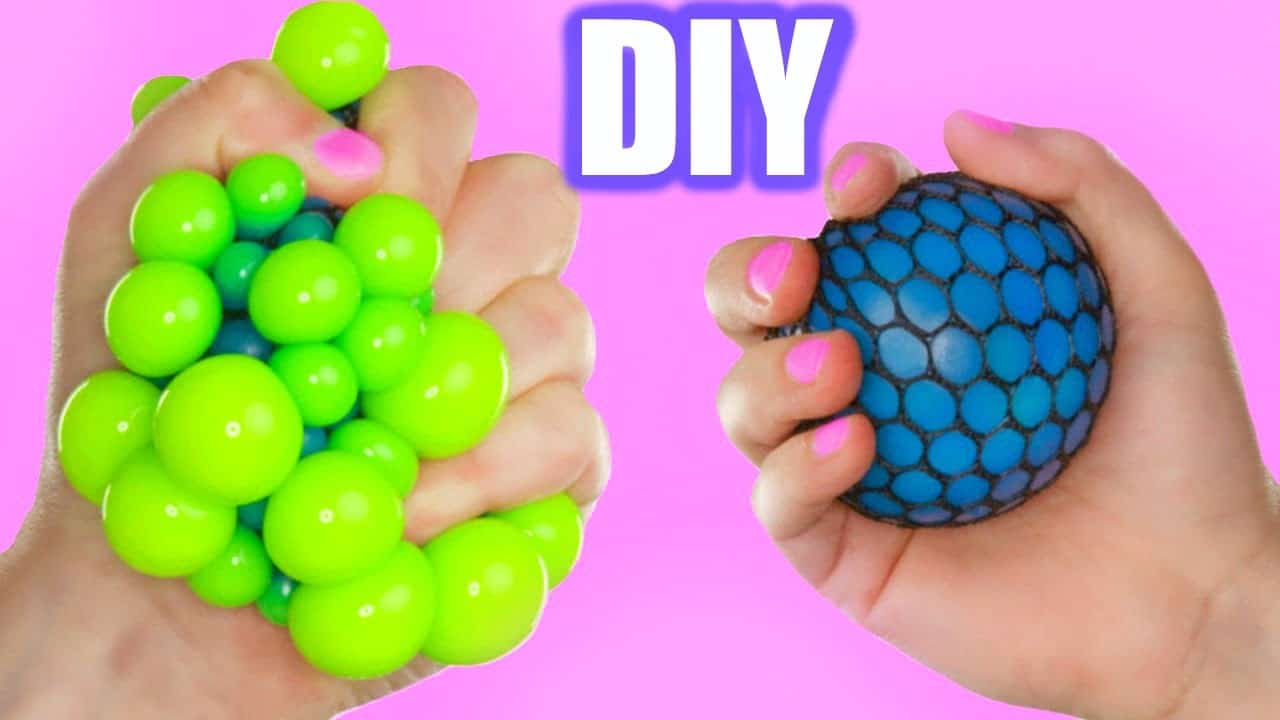Unleash the Fun: Crafting Stress Balls with Your Kids
Hey there, awesome parents! Are you on the lookout for a super fun and budget-friendly craft to enjoy with your little ones? I’ve got just the thing for you – making stress balls at home! Not only are these squishy stress-relievers perfect for keeping tiny hands busy, but they also provide a wonderful way to work through the wiggles and anxieties kids (and let’s be honest, we parents too) often face. Ready to dive in? Follow this delightful guide to create your very own stress balls that are as unique as your family!
Why Stress Balls?
Boosts Creativity: Designing homemade stress balls can spark imagination and creativity. Each ball can be a mini piece of art!
Mindfulness and Relaxation: Squeezing a stress ball can be a calming activity that promotes mindfulness and reduces stress. It’s like a mini escape to relaxation-ville!
Hand Strengthening: Using these nifty spheres can help children develop fine motor skills and hand strength. They’re like a mini workout for the hands!
Materials You’ll Need
Before we get our hands doughy, let’s round up the supplies! You’ll be pleased to know that most items can be found right at home or at a local store. Here’s your stress ball starter kit:
- Balloons: Grab some latex balloons in various colors for a vibrant touch.
- Filling: Flour, rice, or fine sand serve as great insides for your stress ball’s squish-factor.
- Funnel: To easily pour your filling into the balloon without a mess. No funnel? No problem! A cut plastic bottle top can be a fantastic substitute.
- Spoon or scoop: For transferring the filling.
- Empty water bottle: To act as a holder and transfer vessel for your filling.
- Permanent markers: For decorating your finished stress balls.
- Scissors: For snipping off the excess balloon parts.
Now that we’ve got our supplies, let’s get to the fun part!
Step-by-Step Guide to Making Your Own Stress Balls
Here’s the scoop on how to whip up these stress-busters in no time.
- Choose Your Filling: Decide whether you’d like flour, rice, or sand in your stress ball. Remember, each texture provides a different sensory experience and squishiness level.
- Prepare Your Balloon: Pick a balloon and gently stretch it out. This makes it easier to fill ‘er up!
- Insert the Funnel: Put the tip of the funnel into the balloon’s neck. Ensure it’s snug to avoid spillage.
- Fill ‘er Up: Pour your chosen filling into the funnel. Gently tap or shake the funnel to help it flow into the balloon.
- Remove the Funnel and Tie: Once you’ve reached your desired level of fullness, remove the funnel and let out any excess air from the balloon. Then, tie a knot close to the filling to keep everything secure. It’s starting to look like a stress ball now!
- Snip the Tail: Carefully cut off the excess part of the balloon above the knot. But be careful not to snip the knot itself, or you might end up with a flour shower!
Voilà – you’ve created a basic stress ball! But why stop there? Let’s add some pizzazz and personality with decorations!
Decorating Your Stress Balls
Unleash your inner artist as you and your kiddos decorate these squishy spheres. Use those permanent markers to draw faces, patterns, or write uplifting messages. You can even glue on yarn for hair or make little capes if you’re feeling extra crafty. The sky’s the limit!
Stress Ball Games and Activities
Once you’ve got a collection of stress balls, it’s time to play! You can:
- Create a target game where you toss the stress balls into different labeled containers for points.
- Have a ‘hot potato’ game, passing the stress ball around in a circle to music.
- Do a blindfolded guess game, identifying which stress ball has rice and which has flour based on the feel.
- Practice juggling for those with a bit more coordination.
Engaging in these activities isn’t just a blast—it helps kids learn valuable coordination and sensory processing skills too!
And there you have it, folks! Making your own stress balls at home with the kiddos is an absolute breeze. Not only does it yield a handy tool for fidgety fingers, but it also opens up a whole world of creativity and family fun. With your stress balls now in tow, get ready to squeeze the day and make every moment count!
Remember, these stress balls are not just a craft; they’re a creation that’s filled with love, laughter, and care. So, embrace these moments, and let them be a joyful space of bonding and learning for you and your children.

Crafting Homemade Stress Balls: A Parent’s Go-To Guide
Five Key Things Parents Should Know Before Starting
- Safety First: When choosing materials, consider the age and maturity of your child. Avoid materials that can be harmful if the stress ball accidentally breaks.
- Mess Control: Crafting can get messy, so prep your space with newspapers or a tablecloth to catch spills, and have a cleanup station ready.
- Balloon Quality: Opt for high-quality, thicker balloons to reduce the chance of them bursting during creation or use.
- Allergies: Be aware of latex allergies since most balloons are made from latex. There are alternatives like stress balls made with balloons from synthetic materials.
- Budget-Friendly Tips: Reuse supplies around your home such as an old water bottle for a funnel or old rice for filling to make this craft as affordable as it is fun.
Welcome to the creative world of making stress balls at home with your kids—where each squishy creation can be a handy tool against stress and a gateway to loads of fun. Dive into this handy guide for a family craft that’s sure to become a favorite!
Benefits of Homemade Stress Balls
Therapeutic Crafting: The act of making stress balls is not just fun, it can also be incredibly soothing—perfect for a chill afternoon activity.
Customization: Let every family member customize their stress ball to reflect their personality and tastes.
Educational Value: Teach lessons about following instructions, measuring, and even the science behind stress relief!
Materials and Setup
Gather your simple, readily available supplies, creating dedicated crafting stations for each step to streamline the process and enhance the fun.
Consider the environment: choose biodegradable balloons and natural fillers to keep your craft eco-friendly if possible.
Creating Your Stress Balls
Quality time is just a few steps away. Guide your kids through the process, encouraging them to fill, tie, and decorate with supervision. Teach them patience and fine motor skills as they funnel in their chosen filling and secure the balloon.
Decoration Junction
The decoration stage is where imagination flourishes. Allow your kids to express themselves, fostering a sense of pride in their creations.
Playful Learning
The fun doesn’t stop with creation. Use your stress balls for educational games that ignite laughter and learning, like sorting, color identification, and counting exercises.
Delight in the process, engage with your children, and offer praise to boost their confidence and creativity. Making stress balls at home isn’t just an activity—it’s an opportunity for growth, reflection, and joy.
With these squishy companions complete, you’re all set for a more relaxed and entertaining day. Keep the guide handy for your next crafting session, because once your kids see how much fun making stress balls can be, they’ll surely want to do it again.
Cherish the memories and smile along with your little ones as they find comfort and excitement in their handcrafted stress relievers. Embrace this craft as a beautiful way to bond and create tangible reminders of the love and care within your family.
See more great Things to Do with Kids in New Zealand here. For more information see here
Disclaimer
The articles available via our website provide general information only and we strongly urge readers to exercise caution and conduct their own thorough research and fact-checking. The information presented should not be taken as absolute truth, and, to the maximum extent permitted by law, we will not be held liable for any inaccuracies or errors in the content. It is essential for individuals to independently verify and validate the information before making any decisions or taking any actions based on the articles.




